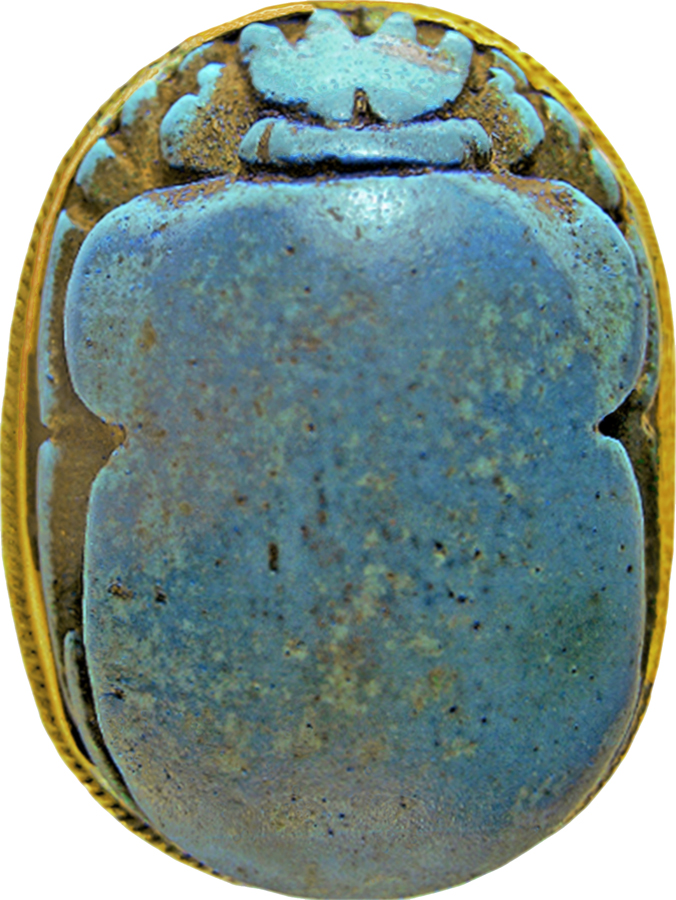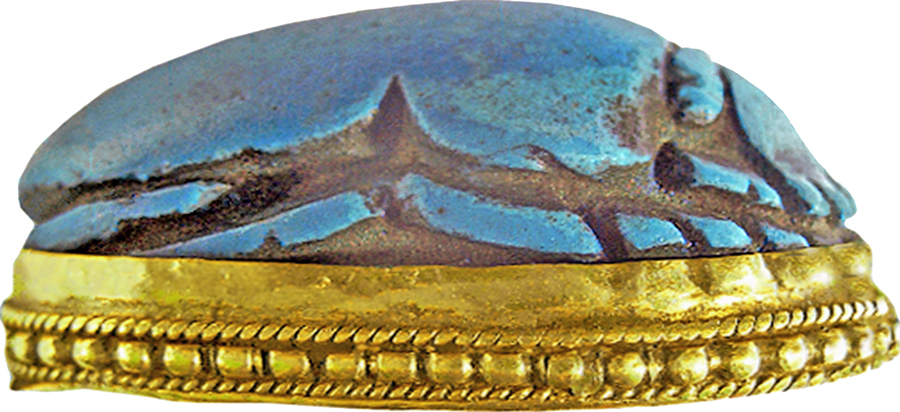Ring Bezel
A scarab made of turquoise-colored glazed steatite, perforated longitudinally, and probably once mounted as a ring. The elaborate gold frame around the bottom was made of thick sheet gold to which two strands of twisted gold wire flanking notched gold wire were added. The free movement of the interlocking scroll pattern carved into the base of the scarab witness the influence of Cretan art on Egypt of the period. The authenticity of this piece is questioned.
Provenance
Provenance (from the French provenir, 'to come from/forth') is the chronology of the ownership, custody, or location of a historical object. Learn more about provenance at the Walters.
Henry Walters, Baltimore, 1913, by purchase; Walters Art Museum, 1931, by bequest.
Exhibitions
| 1984-1987 | Objects of Adornment: Five Thousand Years of Jewelry from the Walters Art Gallery, Baltimore. Cooper-Hewitt National Design Museum, New York; Chrysler Museum of Art, Norfolk; Carnegie Museum of Art, Pittsburgh; San Antonio Museum of Art, San Antonio; Philbrook Museum of Art, Tulsa; Honolulu Academy of Arts, Honolulu; New Orleans Museum of Art, New Orleans; Milwaukee Art Museum, Milwaukee; Minneapolis Institute of Art, Minneapolis; Toledo Museum of Art, Toledo; The John and Mable Ringling Museum of Art, Sarasota. |
| 1987 | Jewelry from the Walters Art Gallery and the Zucker Family Collection. The Walters Art Gallery, Baltimore. |
| 1979-1980 | Jewelry - Ancient to Modern. The Walters Art Gallery, Baltimore. |
Conservation
| Date | Description | Narrative |
|---|---|---|
| 3/21/1984 | Treatment | cleaned |
Geographies
Egypt (Place of Origin)
Measurements
H: 7/16 x W: 11/16 x L: 15/16 in. (1.1 x 1.8 x 2.4 cm)
Credit Line
Acquired by Henry Walters, 1913
Location in Museum
Not on view
Accession Number
In libraries, galleries, museums, and archives, an accession number is a unique identifier assigned to each object in the collection.
In libraries, galleries, museums, and archives, an accession number is a unique identifier assigned to each object in the collection.
42.38








